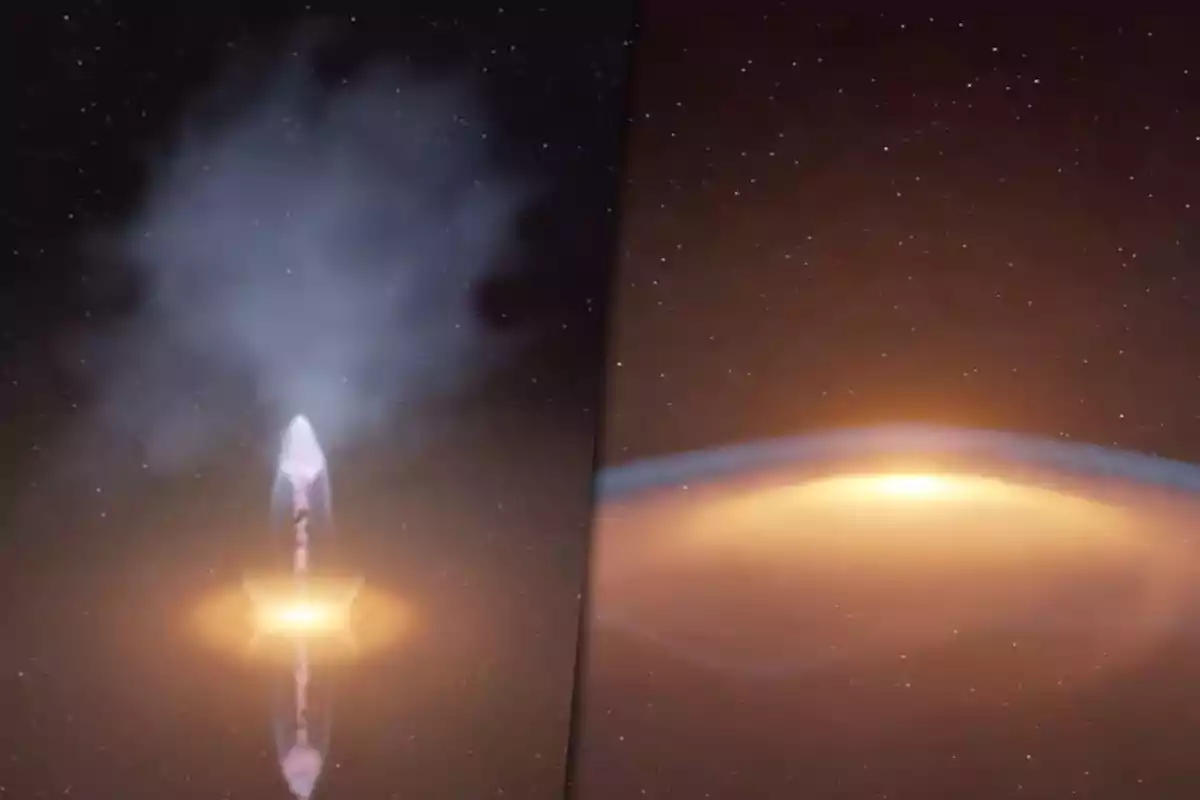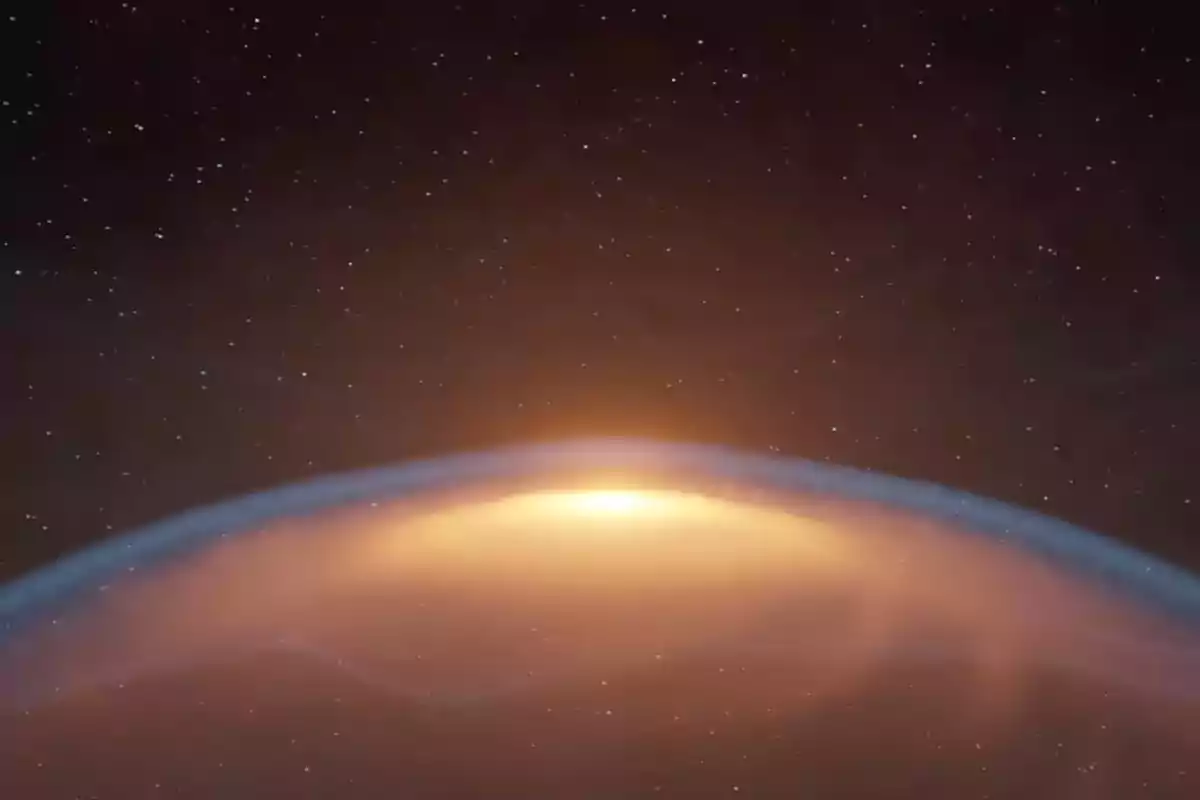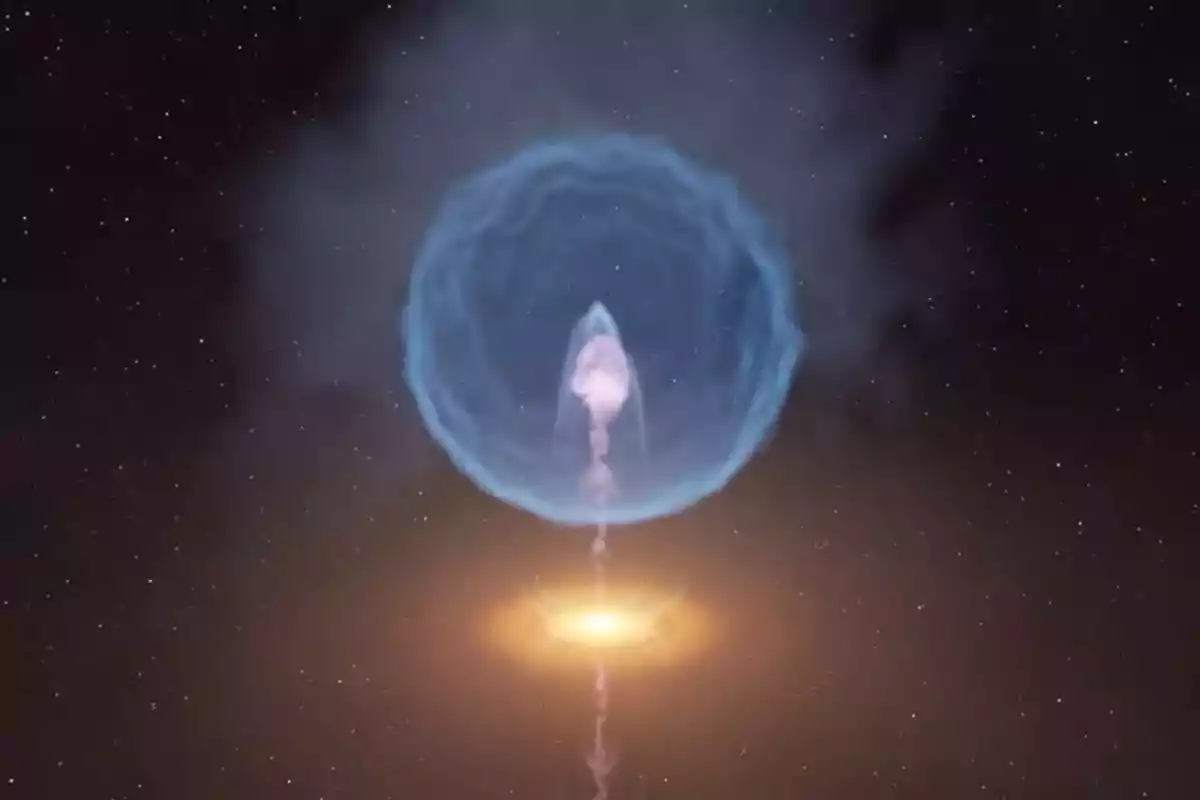
A star was trapped in its own explosion: a phenomenon never seen before
A Japanese team discovered that a newly born star became trapped in its own explosion
A team of astronomers from Japan detected a never-before-seen phenomenon in space. A star became trapped in its own shockwave after an explosion. The finding could change the way we understand the formation of planets and stars.
The anomaly was recorded at a distance of 441 light-years from Earth in the constellation Ophiuchus, thanks to the ALMA radio telescope located in Chile. This is a key discovery for science.

What happened to this star?
The phenomenon was observed in WSB 52, a protoplanetary disk in the process of formation. What stands out is that the star caused such a powerful explosion that it ended up enveloped in the effects of its own energy.
The collected data show that the object interacted with a shock bubble. This occurred when a jet of hot gas was ejected and collided with cold gas in the environment, generating a shockwave.
Visible consequences in its movement
Specialists observed that WSB 52 shows deformations and alterations in its rotation. This would indicate a significant loss of mass and a strong interaction within the disk.
Asombro en la ciencia: una estrella recién nacida quedó envuelta en su estallido
Additionally, the star appears to be in a feedback cycle. The jets of gas themselves generate new bubbles that, in turn, trigger new bursts.
Why is this discovery important?
Masataka Aizawa, leader of the study at the University of Ibaraki, compared the event to an action scene: someone throws a projectile at a wall, the debris bounces back and hits them. The same thing happened, metaphorically, with the star.

This finding opens new hypotheses. If these processes are common in the early stages of a star, the origin of planetary systems like ours could have been much more chaotic than previously thought.
What do scientists say?
Astronomers explained that this sheds new light on the dynamic processes of stellar formation. The interaction between jets and bubbles could be key to understanding how planetary disks evolve.
Where was the research published?
The details of the discovery were published in the prestigious scientific journal The Astrophysical Journal. The phenomenon is the first of its kind to be clearly observed.
More posts: